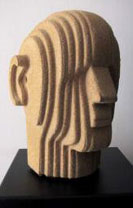Chris98
Well-Known Member
- Messages
- 1,079
Hello,
Just recently I got interested in stereo recording prompted by a little mic demo I found on the web. With stereo recording you ideally need two microphones that are identically matched. I don’t have two identical mics, in fact, I only have two mics and they are not what you’d describe as even coming close to being similar. Even the way the sound waves are turned into electrical signals operates on a completely different principle!
My set up:

But, being keen to play around and see if there’s any mileage in stereo recording the sax I decided to have a go and see how it sounded. There are several ways of setting up stereo mics and as this was my first time I decided to keep it simple and opted for the X-Y set up. I then recorded two claves being bashed together to ensure the phase was correct (making sure the wave forms moved up and down together) Also, as best I could, set the levels the same.
Rather than use my usual sax of choice, the tenor I decided to try to record my alto, I’ve hardly played it for months so it was time it got some use, and I’ve not yet managed to get what I feel is an okay recording of it.
Instead of giving you the full recording mixed with the backing track, I’ve staggered the mixing, so to start with you have just the alto (naked), then I bring in the reverb and finally I bring in the backing track.
The two mics are panned hard left and hard right, the dynamic mic is in your right ear and the studio condenser mic is in your left. I was standing about three feet away from the mics.
Chris98 – Jumpin’ Jam Alto (Build Up) 140.mp3
It’s difficult to know how much if anything the stereo recording of the sax adds compared to recording in mono like I have done thus far. And it’s probably not fair to judge the idea based on this recording as I’m using two completely different mics, but I think the stereo recording has perhaps more body to the sax sound and greater depth to the recording.
Anyway it was a bit of fun and I’d be interested to hear if anyone’s played around with stereo recording and has any advice or thoughts on what I’ve done.
Best wishes,
Chris
P.S. Pete I think I’m working this tune into the ground, do you have any more up your sleeve?
Just recently I got interested in stereo recording prompted by a little mic demo I found on the web. With stereo recording you ideally need two microphones that are identically matched. I don’t have two identical mics, in fact, I only have two mics and they are not what you’d describe as even coming close to being similar. Even the way the sound waves are turned into electrical signals operates on a completely different principle!
My set up:

But, being keen to play around and see if there’s any mileage in stereo recording the sax I decided to have a go and see how it sounded. There are several ways of setting up stereo mics and as this was my first time I decided to keep it simple and opted for the X-Y set up. I then recorded two claves being bashed together to ensure the phase was correct (making sure the wave forms moved up and down together) Also, as best I could, set the levels the same.
Rather than use my usual sax of choice, the tenor I decided to try to record my alto, I’ve hardly played it for months so it was time it got some use, and I’ve not yet managed to get what I feel is an okay recording of it.
Instead of giving you the full recording mixed with the backing track, I’ve staggered the mixing, so to start with you have just the alto (naked), then I bring in the reverb and finally I bring in the backing track.
The two mics are panned hard left and hard right, the dynamic mic is in your right ear and the studio condenser mic is in your left. I was standing about three feet away from the mics.
Chris98 – Jumpin’ Jam Alto (Build Up) 140.mp3
It’s difficult to know how much if anything the stereo recording of the sax adds compared to recording in mono like I have done thus far. And it’s probably not fair to judge the idea based on this recording as I’m using two completely different mics, but I think the stereo recording has perhaps more body to the sax sound and greater depth to the recording.
Anyway it was a bit of fun and I’d be interested to hear if anyone’s played around with stereo recording and has any advice or thoughts on what I’ve done.
Best wishes,
Chris
P.S. Pete I think I’m working this tune into the ground, do you have any more up your sleeve?






